In the increasingly complex world of global labeling, tracking changes across labeling content is more than a best practice—it’s a regulatory necessity.
Health authorities around the globe are demanding more detailed accountability, documentation, and traceability of every change made throughout the product lifecycle. Staying compliant is a major challenge for many companies, especially those with siloed systems.
The Reality: A Web of Disconnected Systems
Consider a global pharmaceutical company with six different systems contributing to the global labeling process. A single safety signal reported through an adverse event triggers a cascade of updates—from the Company Core Data Sheet (CCDS) to local labeling, artwork, and sticky labels on packaging. Each of these updates may be managed in separate systems, creating a fragmented data environment that’s difficult to navigate, let alone audit.
This complexity becomes even more daunting when health authorities request an audit. Imagine being asked to produce a timeline of every change related to a specific drug over the past year. Without a clear and connected view of your content lifecycle, that task can take weeks—and expose major compliance gaps in the process.
Why Label Tracking Matters More Than Ever
Label tracking is the ability to monitor, trace, and understand the journey of content changes from source to output. In today’s regulatory landscape, it isn’t optional. Health authorities expect companies to provide transparency around:
- What triggered a label change
- When the change occurred
- Which documents and markets were affected
- How updates were implemented and approved
Failing to answer these questions quickly and confidently could result in compliance issues, delayed product timelines, or even fines.
A Smarter Approach: Contextualized Tracking with AI
This is where Glemser’s approach stands out. We connect across the systems you already use—whether that’s five, ten, or twenty—and establish relationships between the data they contain. Our AI-powered tools don’t just collect data; they understand it.
By applying natural language processing and machine learning, our platform identifies both hard relationships (where system IDs match across platforms) and soft relationships (where connections are less direct but contextually clear). We’ve honed our solution to treat soft relationships as hard ones, increasing accuracy and insight across your content landscape.
For example, if a safety signal ID appears in an adverse event report for a specific product, our system traces that signal to that product’s active CCDS and connects it downstream to relevant labeling components—even when the connections aren’t explicitly mapped. These AI-driven insights power more complete, connected, and actionable views of your labeling data. Keeping your current labeling systems and leveraging a product that works across them allows for minimal disruption to the process and provides immense value in the end-to-end view of a label change. Responding to audits becomes simpler, and implementing process improvements to accelerate the label change timeline is possible.
Audits Made Easy (or At Least Easier)
Imagine a health authority requests: “Tell me every change made to Drug X in 2023, from initial safety event to final supply chain update.” Instead of scrambling across disconnected systems, you can pull that information directly from our system.
The platform delivers a full view of the timeline:
- The initial safety event
- The resulting CCDS update
- Any changes to reference and dependent labels or artwork
- Final supply chain documentation
It’s all there, connected and traceable—from trigger to output.
The Benefit: Regulatory Confidence, Without Reinventing Your Stack
One of the key differentiators in Glemser’s approach is that we don’t ask you to rip and replace or change your current process. We understand that life sciences organizations have already invested heavily in systems for safety, labeling, regulatory submissions, and supply chain. Instead, we work with what you have, connecting the dots to give you:
- A unified view of label-related changes
- Improved search and traceability
- Faster audit response times
- Increased confidence in compliance readiness
And because our system is powered by AI trained specifically for the life sciences industry, it delivers insights that are both intelligent and relevant—without introducing unnecessary complexity.
Looking Ahead: Proactive vs. Reactive Compliance
Regulatory audits are becoming more rigorous as authorities look to ensure patient safety and global harmonization. By investing in intelligent label tracking now, companies can shift from reactive fire-fighting to proactive compliance.
It’s not just about passing an audit—it’s about building a content ecosystem that supports faster decision-making, fewer errors, and a clearer understanding of how every piece of content impacts another.
Label tracking is more than a compliance checkbox. It’s a strategic asset. And in an era of increasing scrutiny, it’s what separates the leaders from the laggards in regulatory operations.
Ready to strengthen your label tracking process with AI? Contact Glemser today to get started.


